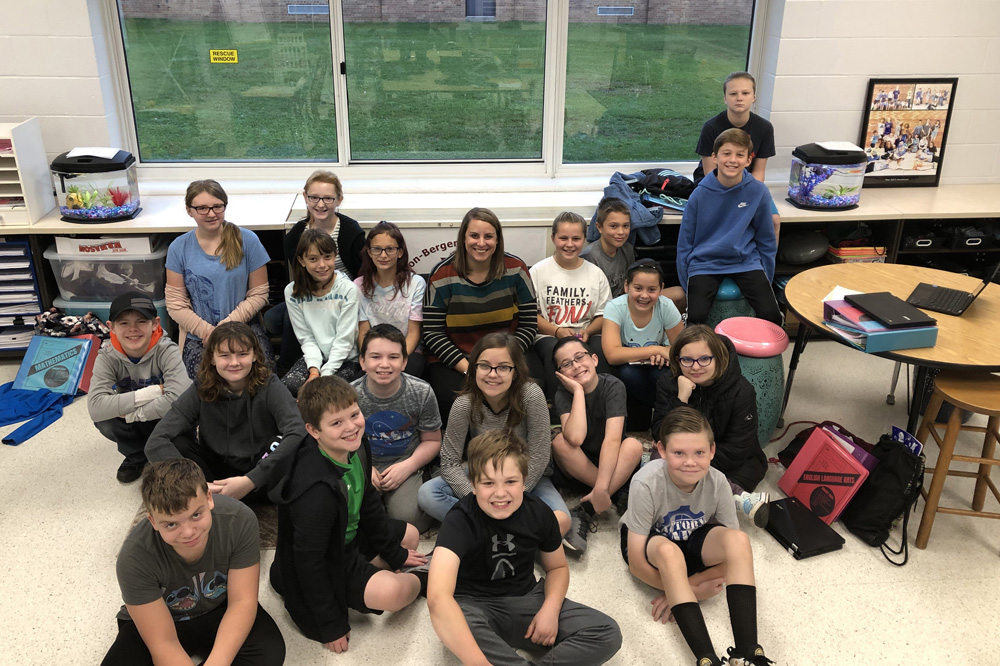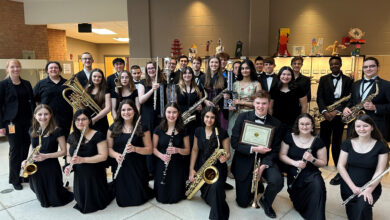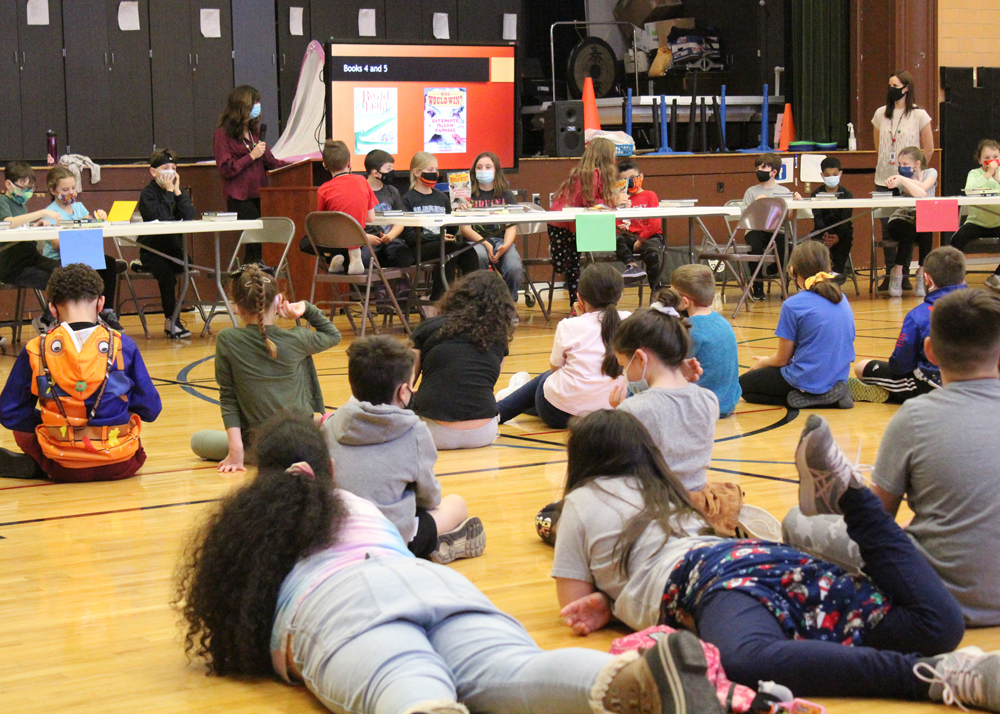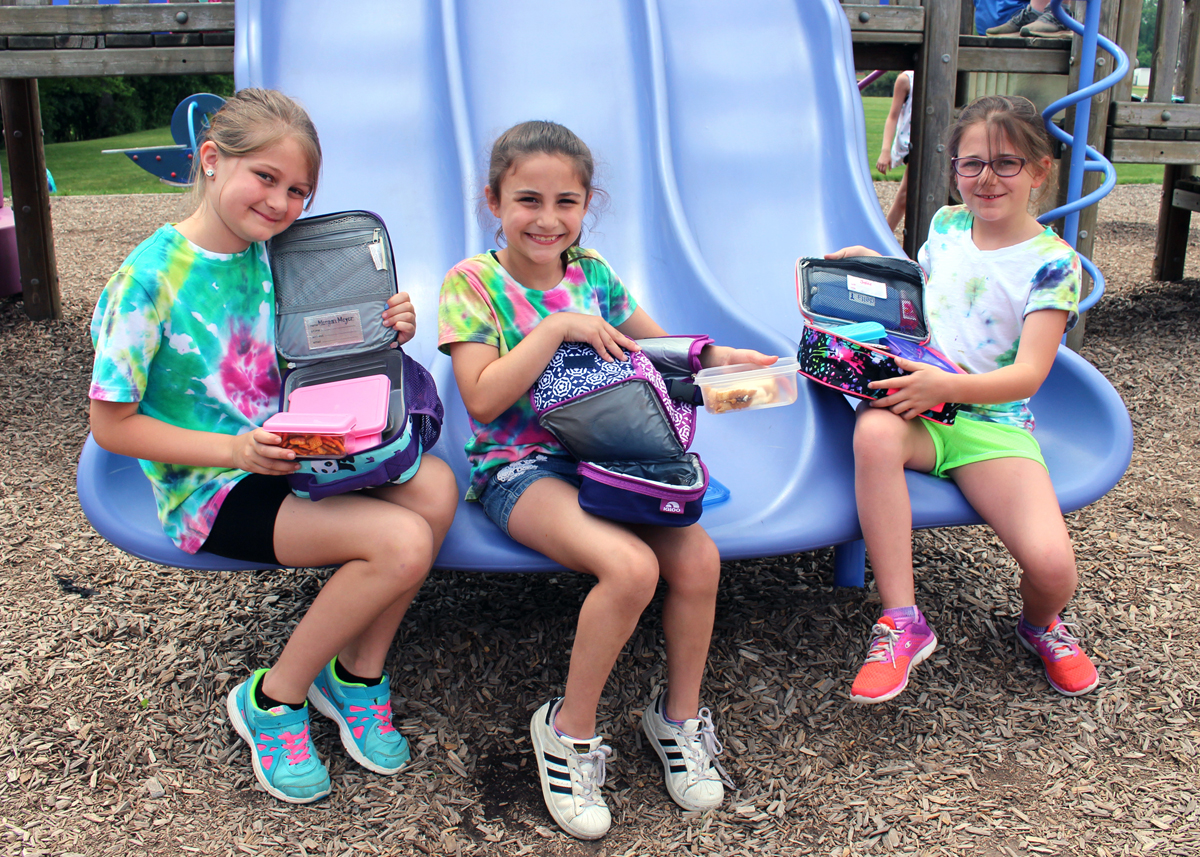Comfortable bodies, focused minds
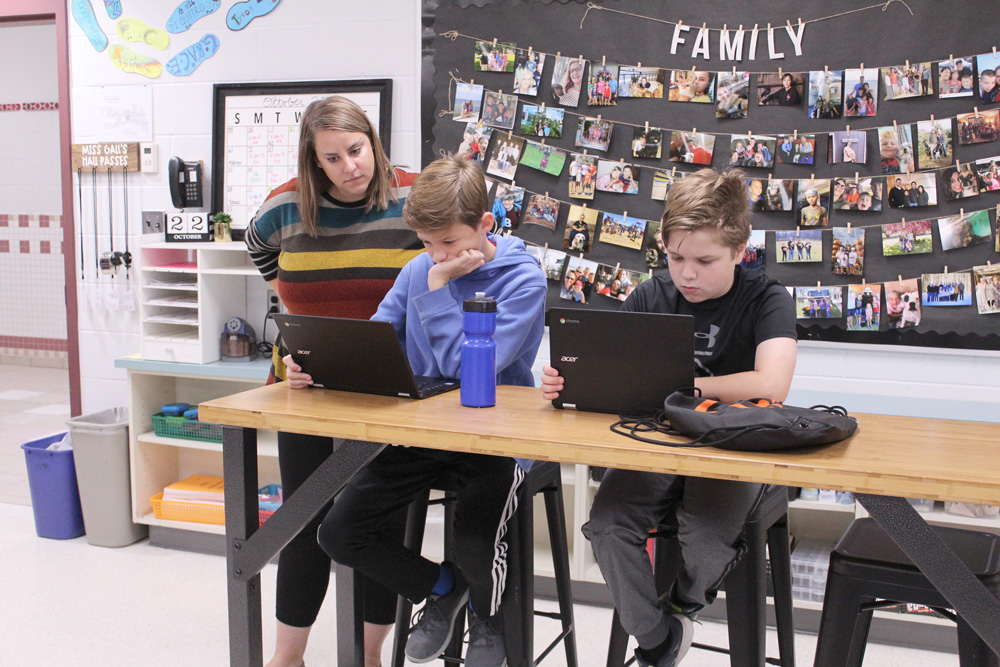
For many adults, the idea of elementary school math class conjures memories of hard chairs with small writing surfaces and no wiggle room. This is not the case in Lynnette Gall’s math class. Gall teaches sixth grade mathematics and health at Byron-Bergen Elementary School in a classroom with flexible seating.
Over the last three years, Gall has been transitioning traditional school desks out of her classroom. As of this school year, her room includes only one traditional school desk. It does, however, have work tables, café tables, counter-height tables, standing desks, stools, lounge chairs, rocking chairs, floor pillows, stadium seats, outdoor furniture, yoga mats, sensory cushions, carpet space, and the recent addition of a Nugget Comfort couch that was donated to Gall’s classroom through DonorsChoose.org. Students have a choice in where they are most comfortable learning.
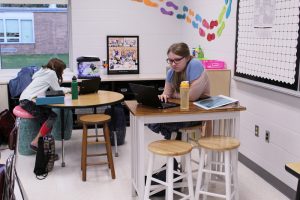
Flexible seating is not a new idea, though the term is recent. School libraries have traditionally offered flexible seating, like cushions and armchairs, where students can read and work. Many instructional classrooms also have alternate seating options for students during certain times of day. But Gall’s transition has been thoughtful and deliberate.
“It’s more of a coffee shop space,” said Gall. “You could equate it to going to Starbucks to work and sitting where you are most comfortable. The students are more engaged and therefore learning more, because they’re comfortable.”
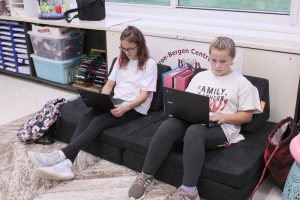
In Gall’s classroom, students decide on a class-by-class basis where they want to sit and can transition throughout the day. In the afternoon, students may have trouble sitting and will be more productive standing at the counter height table. “My room has a lot of movement,” said Gall. “The kids are always up, working with a partner or small group and moving around the room. Students aren’t sitting stagnant. They are engaged and collaborating. It’s preparation for how they will work in college and career.”
“The flexible seating is good because you can get comfortable,” said sixth grade student Libby Starowitz. “You don’t just sit at a desk all day.”
“You have the option of sitting at a desk,” added Paige O’Brien, “but most people like the other options like the rocking chairs or high stools.”
High School Social Studies teacher Jennifer Back also incorporates flexible seating into her classroom and plans to increase seating options in the future. She was inspired two years ago when the desks were removed from her classroom to be used for Regents testing. “It was telling how the students actually wanted to sit without any desks involved,” said Back. “It makes learning and school more comfortable and less constraining.”
Second Grade Teacher Amber Taylor-Burns also uses flexible seating in her classroom. “I supply students with colorful rugs, a variety of pillows, pop-up chairs, and bucket chairs in our classroom library,” said Taylor-Burns. “The students choose a spot where they can do their best work, but they must use the seat appropriately and take care of the supplies. Students are comfortable, motivated, and engaged when using the flexible seating.”
While Gall wants the students to take ownership of the space, safety is number one. Students must use the flexible seating responsibly. “It’s fostering a shared responsibility instead of a ‘this is mine’ mentality,” said Gall. “Everyone has to work together to make the classroom successful.”
Gall’s overarching goal is for students to feel comfortable in their learning. Her efforts span beyond flexible seating to include fish tanks, plants, a student curated photo collage, and a sound machine that plays calming music throughout the day.
“My goal is to provide a safe, happy, and healthy place where my students feel at home to learn,” said Gall. “It’s more than just flexible seating, but making the whole child feel comfortable — mind, heart, and body.”
For more information on Byron-Bergen Elementary School community-funded classroom projects visit www.donorschoose.org/school/byron-bergen-elementary-school/21357/?teachers.
Provided information
Photos by Gretchen Spittler
